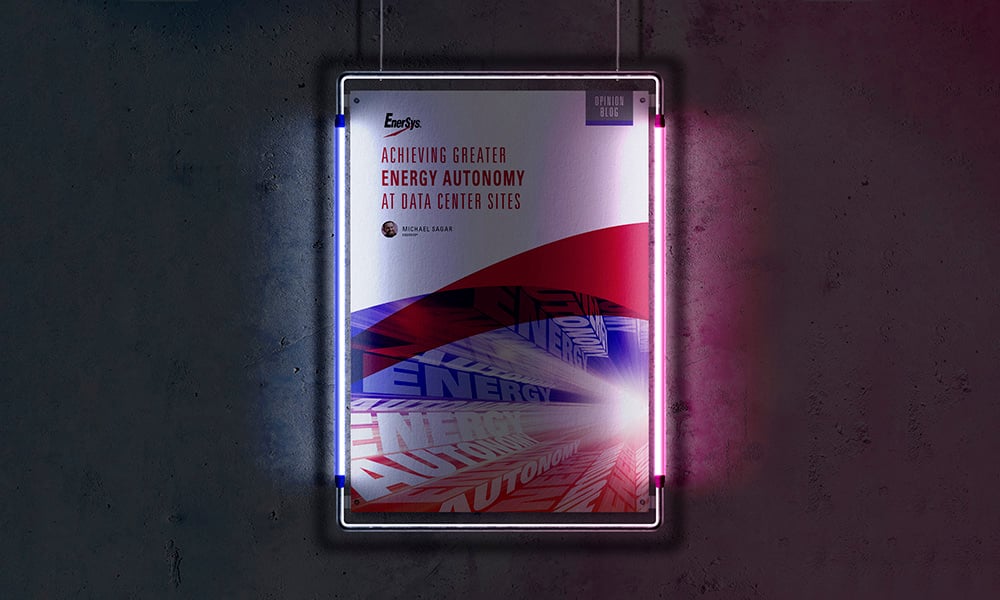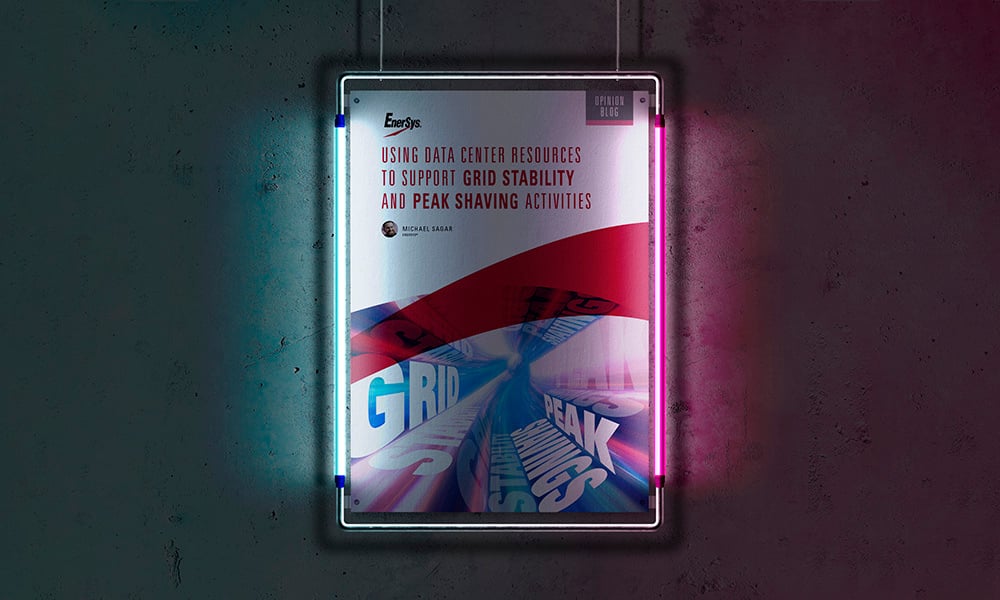Data centers in 2025 are set to undergo rapid growth, as well as fundamental changes. As the data center industry faces unprecedented demands and challenges, innovation isn’t just a goal—it’s a necessity. Leaders in the space must rethink how they operate, embracing bold ideas to drive sustainability, efficiency, and reliability. At EnerSys, staying ahead means questioning assumptions and adopting fresh perspectives. Here’s my view on the five trends shaping data centers in 2025—and how we’re helping our partners prepare for what’s next.

Data Center sustainability has evolved from a regulatory requirement to a business imperative. But it’s more than that—it’s a driver of growth and innovation. Operators that treat sustainability as an opportunity rather than a compliance checkbox will unlock significant competitive advantages.
Advanced energy storage systems, like those from EnerSys, enable operators to cut energy consumption and cooling requirements while aligning with environmental goals. Moreover, energy storage systems can increasingly support the grid through peak-shaving and exporting stored energy during times of peak demand.
This isn’t just about meeting targets—it’s about reimagining what’s possible.

The world is transitioning to renewables to minimize its reliance on fossil fuels, and data centers must do the same. Yet, the variability of solar and wind power poses challenges to uptime and reliability.
The solution lies in robust energy storage systems that ensure seamless renewable integration. Some data centers may look to store clean energy generated onsite, such as through a rooftop solar array. However, data centers will continue investigating the potential of the storage of clean energy generated from nearby offsite renewable infrastructure, such as hydroelectric, solar, and wind farms.
At EnerSys, we’re helping data centers prove that sustainability and reliability coexist—turning renewable energy into a strength, not a limitation.

The rise of AI, IoT, and edge computing is driving significant growth in data demand. Static, traditional infrastructure can’t keep up with this pace. Scalable, modular energy storage systems are a game-changer, allowing data centers to expand capacity quickly and efficiently. EnerSys offers solutions that align with each operator’s unique growth trajectory, ensuring their infrastructure is always ready for what’s next.

What happens if a data centre goes down? Downtime isn’t just a technical failure—it’s a risk to reputation and revenue. Reliability has become a key differentiator in the data center space. Advanced energy storage systems ensure uninterrupted operations, even during power fluctuations or outages. EnerSys partners with data centers to deliver reliable, high-performance solutions that safeguard operations and build trust with end-users.

Short-term savings often come at the expense of long-term success. Astute operators are shifting their focus to total cost of ownership (TCO), prioritizing solutions that offer extended lifespans, minimal maintenance, and high recyclability. Advanced Thin Plate Pure Lead (TPPL) batteries from EnerSys are designed with this in mind, providing exceptional longevity and sustainability benefits that deliver greater value over time.
A BOLD FUTURE FOR DATA CENTERS IN 2025 AND BEYOND
The future of data centers lies in innovation and courage—the courage to challenge conventional approaches, adopt newer technologies, and embrace sustainability as a catalyst for growth. EnerSys supports our customer partners in this journey, equipping them with the energy storage solutions they need to thrive in an ever-evolving industry.

Michael Sagar
Director of Marketing at EnerSys, a global leader in energy storage solutions.
Learn more about innovations for data centers by contacting your local EnerSys Sales Representative.
About EnerSys
Sustainability
Caution Concerning Forward-Looking Statements
EnerSys is making this statement in order to satisfy the “Safe Harbor” provision contained in the Private Securities Litigation Reform Act of 1995. Any of the statements contained in this article that are not statements of historical fact may include forward-looking statements that involve a number of risks and uncertainties. A forward-looking statement predicts, projects, or uses future events as expectations or possibilities. Forward-looking statements may be based on expectations concerning future events and are subject to risks and uncertainties relating to operations and the economic environment, all of which are difficult to predict and many of which are beyond our control. For a discussion of such risks and uncertainties that could cause actual results to differ materially from those matters expressed in or implied by forward-looking statements, please see our risk factors as disclosed in the “Risk Factors” section of our annual report on Form 10-K for the most recently ended fiscal year. The statements in this article are made as of the date of this article, even if subsequently made available by EnerSys on its website or otherwise. EnerSys does not undertake any obligation to update or revise these statements to reflect events or circumstances occurring after the date of the article.









